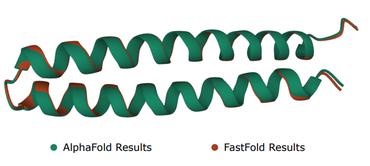Search Results for author: Victor Schmidt
Found 14 papers, 9 papers with code
A Hitchhiker's Guide to Geometric GNNs for 3D Atomic Systems
1 code implementation • 12 Dec 2023 • Alexandre Duval, Simon V. Mathis, Chaitanya K. Joshi, Victor Schmidt, Santiago Miret, Fragkiskos D. Malliaros, Taco Cohen, Pietro Liò, Yoshua Bengio, Michael Bronstein
In these graphs, the geometric attributes transform according to the inherent physical symmetries of 3D atomic systems, including rotations and translations in Euclidean space, as well as node permutations.
On the importance of catalyst-adsorbate 3D interactions for relaxed energy predictions
no code implementations • 10 Oct 2023 • Alvaro Carbonero, Alexandre Duval, Victor Schmidt, Santiago Miret, Alex Hernandez-Garcia, Yoshua Bengio, David Rolnick
The use of machine learning for material property prediction and discovery has traditionally centered on graph neural networks that incorporate the geometric configuration of all atoms.
Crystal-GFN: sampling crystals with desirable properties and constraints
1 code implementation • 7 Oct 2023 • Mila AI4Science, Alex Hernandez-Garcia, Alexandre Duval, Alexandra Volokhova, Yoshua Bengio, Divya Sharma, Pierre Luc Carrier, Yasmine Benabed, Michał Koziarski, Victor Schmidt
Accelerating material discovery holds the potential to greatly help mitigate the climate crisis.
torchgfn: A PyTorch GFlowNet library
2 code implementations • 24 May 2023 • Salem Lahlou, Joseph D. Viviano, Victor Schmidt, Yoshua Bengio
The growing popularity of generative flow networks (GFlowNets or GFNs) from a range of researchers with diverse backgrounds and areas of expertise necessitates a library which facilitates the testing of new features such as training losses that can be easily compared to standard benchmark implementations, or on a set of common environments.
FAENet: Frame Averaging Equivariant GNN for Materials Modeling
1 code implementation • 28 Apr 2023 • Alexandre Duval, Victor Schmidt, Alex Hernandez Garcia, Santiago Miret, Fragkiskos D. Malliaros, Yoshua Bengio, David Rolnick
Applications of machine learning techniques for materials modeling typically involve functions known to be equivariant or invariant to specific symmetries.
PhAST: Physics-Aware, Scalable, and Task-specific GNNs for Accelerated Catalyst Design
2 code implementations • 22 Nov 2022 • Alexandre Duval, Victor Schmidt, Santiago Miret, Yoshua Bengio, Alex Hernández-García, David Rolnick
Catalyst materials play a crucial role in the electrochemical reactions involved in numerous industrial processes key to this transition, such as renewable energy storage and electrofuel synthesis.
ClimateGAN: Raising Climate Change Awareness by Generating Images of Floods
2 code implementations • ICLR 2022 • Victor Schmidt, Alexandra Sasha Luccioni, Mélisande Teng, Tianyu Zhang, Alexia Reynaud, Sunand Raghupathi, Gautier Cosne, Adrien Juraver, Vahe Vardanyan, Alex Hernandez-Garcia, Yoshua Bengio
Climate change is a major threat to humanity, and the actions required to prevent its catastrophic consequences include changes in both policy-making and individual behaviour.
COVI-AgentSim: an Agent-based Model for Evaluating Methods of Digital Contact Tracing
no code implementations • 30 Oct 2020 • Prateek Gupta, Tegan Maharaj, Martin Weiss, Nasim Rahaman, Hannah Alsdurf, Abhinav Sharma, Nanor Minoyan, Soren Harnois-Leblanc, Victor Schmidt, Pierre-Luc St. Charles, Tristan Deleu, Andrew Williams, Akshay Patel, Meng Qu, Olexa Bilaniuk, Gaétan Marceau Caron, Pierre Luc Carrier, Satya Ortiz-Gagné, Marc-Andre Rousseau, David Buckeridge, Joumana Ghosn, Yang Zhang, Bernhard Schölkopf, Jian Tang, Irina Rish, Christopher Pal, Joanna Merckx, Eilif B. Muller, Yoshua Bengio
The rapid global spread of COVID-19 has led to an unprecedented demand for effective methods to mitigate the spread of the disease, and various digital contact tracing (DCT) methods have emerged as a component of the solution.
Predicting Infectiousness for Proactive Contact Tracing
1 code implementation • ICLR 2021 • Yoshua Bengio, Prateek Gupta, Tegan Maharaj, Nasim Rahaman, Martin Weiss, Tristan Deleu, Eilif Muller, Meng Qu, Victor Schmidt, Pierre-Luc St-Charles, Hannah Alsdurf, Olexa Bilanuik, David Buckeridge, Gáetan Marceau Caron, Pierre-Luc Carrier, Joumana Ghosn, Satya Ortiz-Gagne, Chris Pal, Irina Rish, Bernhard Schölkopf, Abhinav Sharma, Jian Tang, Andrew Williams
Predictions are used to provide personalized recommendations to the individual via an app, as well as to send anonymized messages to the individual's contacts, who use this information to better predict their own infectiousness, an approach we call proactive contact tracing (PCT).
Image-to-image Mapping with Many Domains by Sparse Attribute Transfer
no code implementations • 23 Jun 2020 • Matthew Amodio, Rim Assouel, Victor Schmidt, Tristan Sylvain, Smita Krishnaswamy, Yoshua Bengio
Unsupervised image-to-image translation consists of learning a pair of mappings between two domains without known pairwise correspondences between points.
Towards Lifelong Self-Supervision For Unpaired Image-to-Image Translation
1 code implementation • 31 Mar 2020 • Victor Schmidt, Makesh Narsimhan Sreedhar, Mostafa ElAraby, Irina Rish
Unpaired Image-to-Image Translation (I2IT) tasks often suffer from lack of data, a problem which self-supervised learning (SSL) has recently been very popular and successful at tackling.
Using Simulated Data to Generate Images of Climate Change
no code implementations • 26 Jan 2020 • Gautier Cosne, Adrien Juraver, Mélisande Teng, Victor Schmidt, Vahe Vardanyan, Alexandra Luccioni, Yoshua Bengio
In our paper, we explore the potential of using images from a simulated 3D environment to improve a domain adaptation task carried out by the MUNIT architecture, aiming to use the resulting images to raise awareness of the potential future impacts of climate change.
Quantifying the Carbon Emissions of Machine Learning
2 code implementations • 21 Oct 2019 • Alexandre Lacoste, Alexandra Luccioni, Victor Schmidt, Thomas Dandres
From an environmental standpoint, there are a few crucial aspects of training a neural network that have a major impact on the quantity of carbon that it emits.
Visualizing the Consequences of Climate Change Using Cycle-Consistent Adversarial Networks
no code implementations • 2 May 2019 • Victor Schmidt, Alexandra Luccioni, S. Karthik Mukkavilli, Narmada Balasooriya, Kris Sankaran, Jennifer Chayes, Yoshua Bengio
We present a project that aims to generate images that depict accurate, vivid, and personalized outcomes of climate change using Cycle-Consistent Adversarial Networks (CycleGANs).





